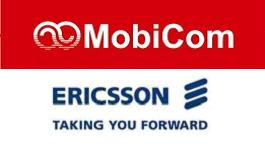Ericsson's leading HSPA technology provides fast data-transmission speeds, boosts network capacity and lowers response times for interactive services. The new HSPA-enabled network will allow MobiCom to offer a range of new services, such as high-speed mobile internet access, video telephony, multimedia messaging (MMS) and other innovative multimedia services related to e-health and e-commerce.
Under the contract, Ericsson is the sole supplier of the WCDMA/HSPA radio access network. It is also responsible for network deployment and a wide range of professional services, including systems integration of MobiCom's multi-vendor network, support and competence development.
Bolor Dorjnamjil, CEO of MobiCom Corporataion LLC, says: "This launch reflects MobiCom's continuous commitment to offering its subscribers the latest services and applications. MobiCom was the first operator to introduce mobile services in Mongolia and is now launching the country's first mobile broadband services. Ericsson's experience in 2G-3G network deployments and extensive support capacity make it the ideal partner for this project."
Jan Campbell, Head of Easter Europe and Central Asia, at Ericsson, says: "It is a great honor to be MobiCom's partner for this milestone launch of the first 3G network in the country. We are confident that mobile broadband services will further facilitate the development of world-class communications in Mongolia for the benefit of its people."
Ericsson's cooperation with MobiCom started in 2004 and includes contracts for GSM radio access and transmission.
Mobicom is providing - video call, - mobile broadband data connectivity, - mobile TV programms, - SMART service (visit special portal web pages, get many kinds of information and download all types of contents with high speed from your mobile phone) kind of services over 3.5G network.
Services Price:
- Video Call Service
1 min = 0.07$
- Mobile Broadband Internet
USB Mode (7.2Mbps)
Internet connection tariff by modem
| Bundle types | Price | Duration |
| 1 GB usage | 12’000 ₮(8.5$) | 1 month |
| 3 GB usage | 22’000 ₮(15$) | 1 month |
| Equipment | Price |
| Modem /SIM card dedicated for data usage only/ | 262’500 ₮(188$) |
| Express card SIM /SIM card dedicated for data usage only/ | 219’000 ₮(156$) |
Mobile internet service tariff from your mobile phone
| Bundle types | Platinum | Gold | Others | Duration |
| 1 GB usage | 12'000 ₮(8.5$) | 1 month | ||
| 3 GB usage | 15'000 ₮(10$) | 20'000 ₮(14$) | 22'000 ₮(15$) | 1 month |
Their 3.5G service is covering Mongolian biggest 3 cities which are Ulaanbaatar, Erdenet and Darkhan.


